Everything you need to know about furniture nails

Users make high demands on modern furniture design, not only reliable, but also beautiful models are in demand. To achieve such indicators, various furniture materials for upholstery and shaped fittings are created. The beauty of the finish depends on the variety in the appearance of decorative hardware, which is achieved due to the different types of structure of the hats and the variety of materials from which these nails are made. Let's take a closer look at everything you need to know about furniture nails.
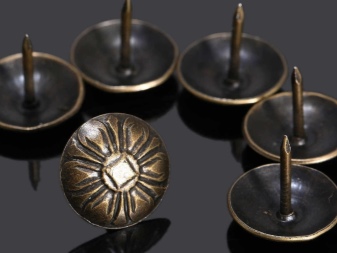
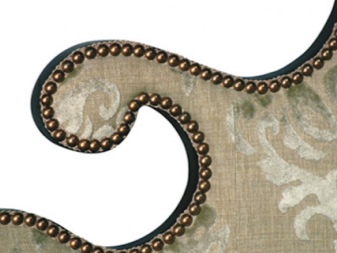
Peculiarities
Finishing decorative hardware differ from similar fastening models in that the finishing products have a short length and a special structure of the cap. The parameters and appearance of the cap can be large or very small. Various types of finishing nails are used to decorate armchairs and sofas, creating a sophisticated and sophisticated appearance. The shape of the head of a furniture finishing nail can be round, square or fancy.
The hat is made using artificial and sometimes natural types of material. Leather, plastic, colored glass, metal, fabric, plastic and wood are used.
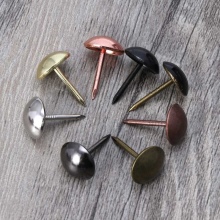

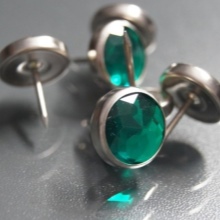
Since the hat has artistic value, it is necessary to hammer in such decorative hardware in a special way, while acting with the utmost care. To perform the work, the craftsmen use a small and lightweight hammer, hammering the hardware according to the existing sketch. As a result, you can get a beautiful designer item with an ornament or a simple geometric pattern. Most often, nails intended for decorative finishing are not used as fasteners. The only way they can be used is to nail down a thin cabinet wall made of plywood.
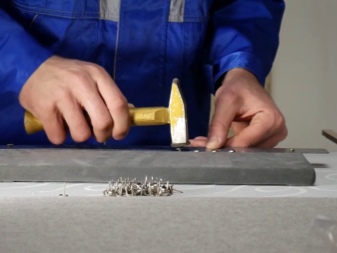
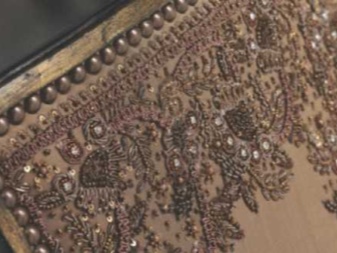
Applications
Decorative nails are distinguished by a variety of options for their appearance, which allows them to be used for a variety of purposes. For example, to fix the decorative molding, in order to fix the upholstery for upholstered furniture, for the coach brace. Decorative wallpaper hardware is used not only for furniture upholstery, they are also used for door design. Due to its variety and decorativeness, upholstery hardware makes it possible to create a unique interior design in the room.
For example, tight nails can be used when two materials with different textures need to be joined together.
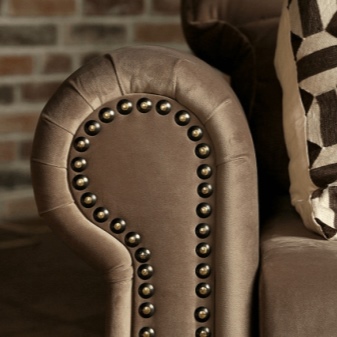
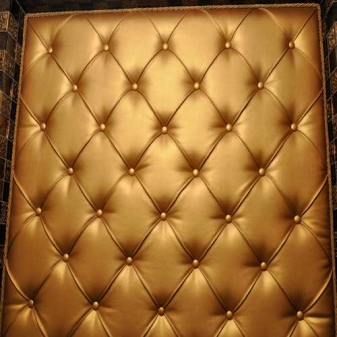
Applying cling nails to any, even the simplest furniture, you can give a unique look. With their help, you can emphasize the silhouette and geometric shapes of the furniture product, as well as make a design drawing on it. With the help of a wallpaper nail, furniture can be given any style - from pretentious classics to the simple style of rustic Provence. To create a finish, nails are hammered into the furniture material, leaving no gaps or making them with a minimum step. A correctly selected type of upholstery nail allows you to make a stylish and individual furniture project, bringing it to life in a single copy.
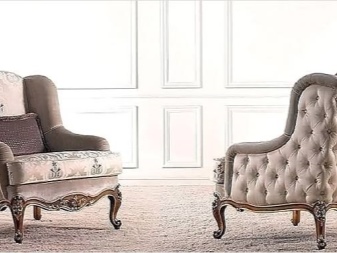
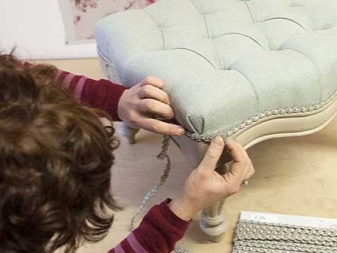
Species overview
There are quite a few options for upholstery nails, all of them can be classified into the following groups:
- curly nails - can be with a large round head or with a wide square head; they are used for upholstery and furniture restoration work;
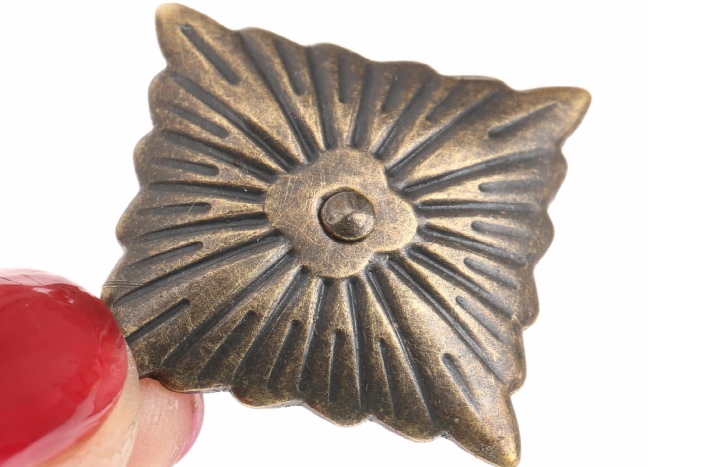
- classic upholstery nails - have a small head and are used to fix upholstery material, used for furniture or for finishing wood door panels; nails firmly hold the material and prevent it from sliding or moving;
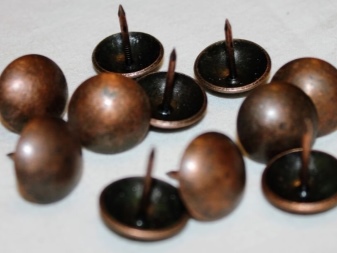
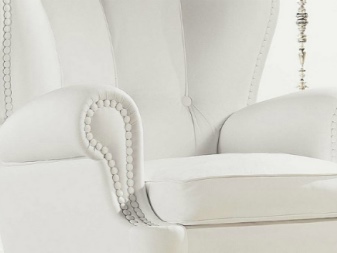
- fluted head nails can be produced in a different size range; they are used for upholstering furniture and for decorating wooden door panels;

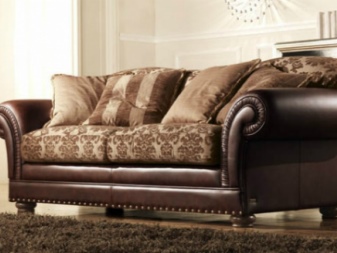
- leather nails - the hat of the hardware has a multi-colored leather cover; with their help, they decorate upholstered furniture, giving respectability to the products;
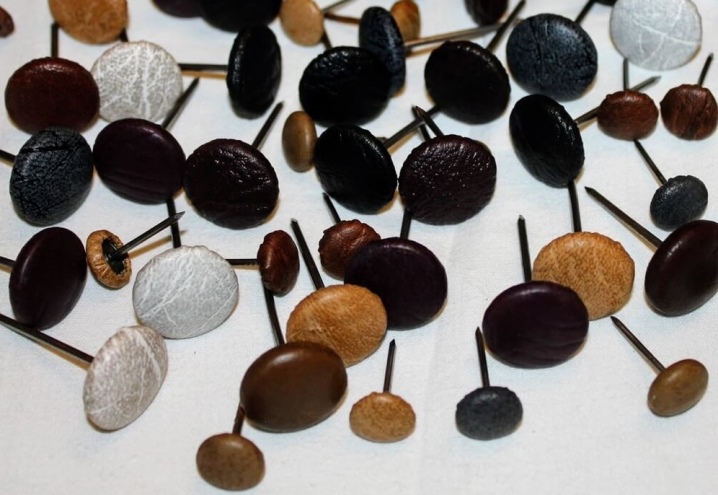
- with rhinestones - the head of such products has an insert made of colored glass, some models are cut; these hardware are intended for the design of leather or fabric upholstery of upholstered furniture;
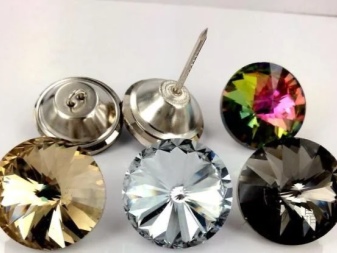
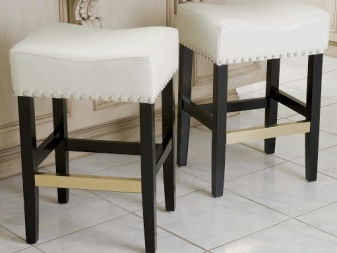
- forged nails completely composed of various metal alloys, the head can have a different shape; they are used for furniture and restoration work.
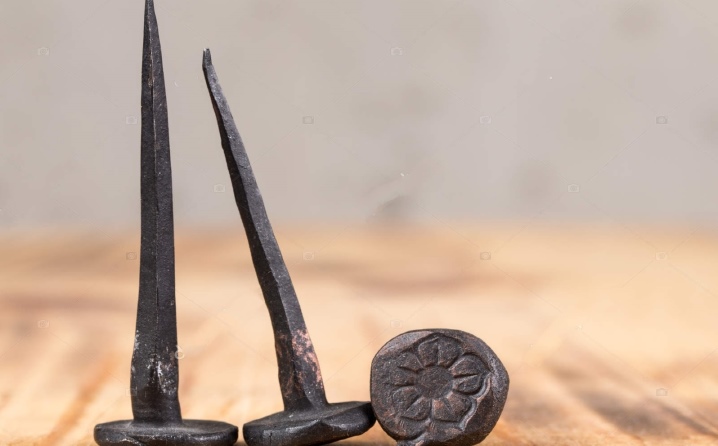
Finishing hardware for furniture is used as an attachment to moldings. In addition, staples can be used instead of a nail. Staples are used to secure fabrics or furniture backs. In addition, there are special staplers for decorative hardware.
With this device, work is done faster, and the installation process itself is greatly simplified.
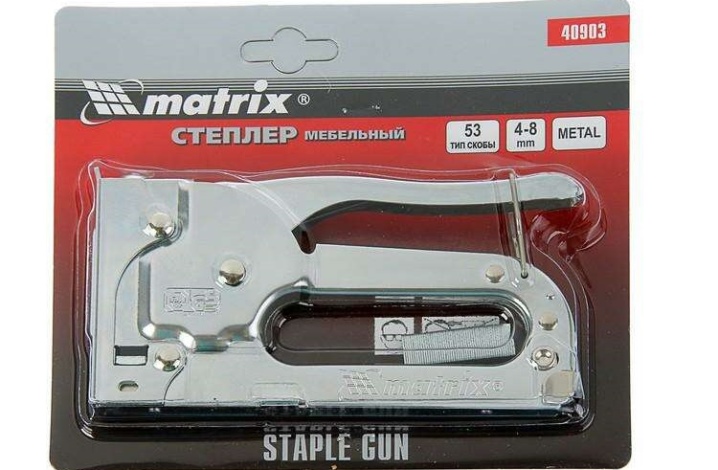
Materials (edit)
The working part of the nail - its rod, which is driven into the furniture material, is made of metal alloys. The cheapest option is steel with a low carbon content. After the nail is made, it is subjected to a zinc coating. For upholstery, you can also find nails made of expensive stainless steel. Such hardware has anti-corrosive properties, and also has a pleasantly pronounced silvery sheen.
To make stylized antique nails, bronze, as well as chrome or nickel can be applied to their coating. In exclusive designer furniture, nails can be covered with fine silvering or gilding. Often brass or copper hardware is used for restoration work.
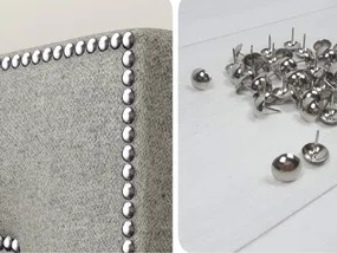
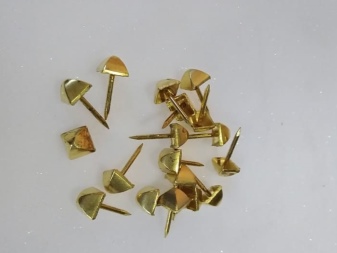
Such a finish attracts with its beauty and does not require dusting, which can wear out over time with the active use of furniture. There are even wooden upholstery nails in old furniture models, but now such products are rare and can hardly be found.
Important! The selection of the material from which the upholstery hardware will be made is carried out in accordance with the design idea, as well as starting from the environment where the furniture will be used.
If she has to come into contact with a humid environment, then it is advisable to choose materials that are resistant to corrosion for decoration.

Dimensions (edit)
Since upholstery hardware is rarely used as a fastener, their size is usually small. In terms of their diameter, hardware can be produced in the range of 0.8–2 mm. The length of nails, as a rule, is standard and is 3 cm. If you want to upholster a wooden door, then upholstery nails are used, the diameter of which is 1.6–2 mm, while the length of the hardware can be from 8 to 25 mm.
When determining the size of the hardware, it is important to take into account the thickness of the upholstery. The hardware has to go through it and go deep into the material - the basis to which the decor is fixed. Upholstery nails should perform the function of fixing the upholstery and at the same time not stand out from the general background of the product. There is a rule according to which the length of the hardware is allowed 2 or 3 times more than the fixed thickness of the material.
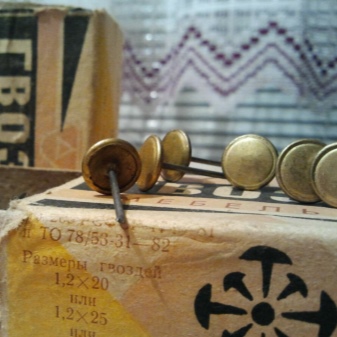
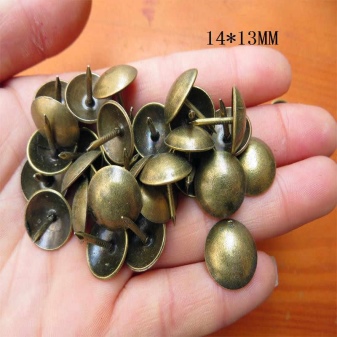
Variety of decor
Finishing hardware for decorating furniture is used according to the same system as conventional types of nails. The principle of use lies in the fact that with a hammer the hardware is driven into the required place. To fix and logically dock several dissimilar materials, use a sufficient number of hardware necessary to maintain a uniform installation step and symmetry.
In order to give upholstered furniture a special chic and elegance, designers use the method of finishing with decorative hardware made along the contour of furniture parts. For this purpose, both all-metal nails and varieties with rhinestones can be applied. This method is used to decorate upholstered armchairs, sofas, chairs.
To complete the edging, the hardware is placed in a straight line, in position one after the other.
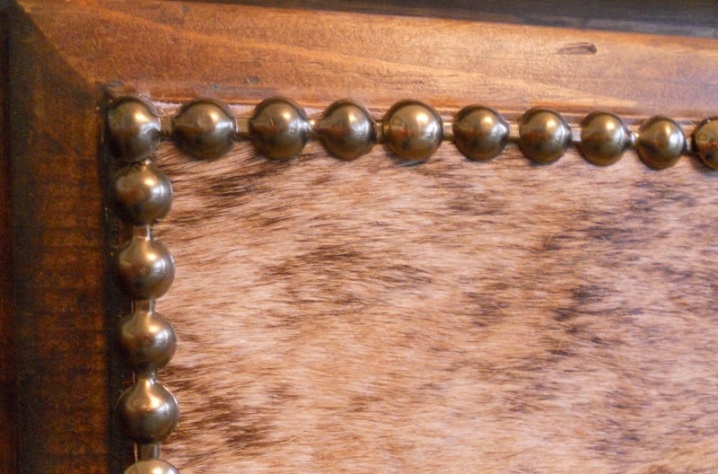
Another common finishing method is a pattern made from decorative nail heads. In this way, not only furniture is decorated, but also door leaves. The heads of nails are positioned so that a complex pattern or geometric figure is obtained from them. Hardware can be arranged in a straight line along the contour, or a symmetrical complex pattern. Sometimes the hardware is positioned as it is done with the so-called carriage coupler, while the heads of the nails are on the surface of the material in a staggered arrangement.
Sometimes, small wallpaper nails are used to simulate a structural finishing stitch, while larger ones are used in the form of overlays, using them to create a solid line or pattern. Upholstery with decorative nails can be applied on leather furniture, as well as on cabinets, dressers, tables and other furniture products. Sometimes decorative nails are used to trim wide frames that frame the mirror surface. Any, even the most mundane item can be made a unique designer product that will be transformed thanks to upholstery nails. Decorated with brass or copper nails create a vintage feel and give the piece an antique look.
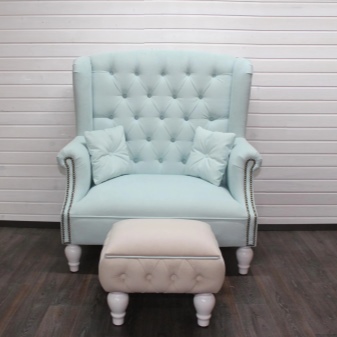
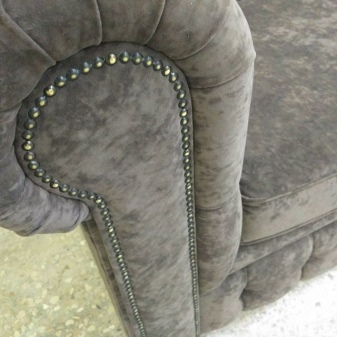
A kind of finishing can be called a special furniture molding. On this decor, which consists of a narrow metal plate, you can see the heads of decorative nails, but this is just an imitation of them. You can fix the molding using several holes located at the ends of this decorative tape.
This decor is convenient in that the tape with imitation nails does not require much time for installation, and with its help you can hide various damage to furniture.

How to accurately hammer decorative nails, see the video.













The comment was sent successfully.